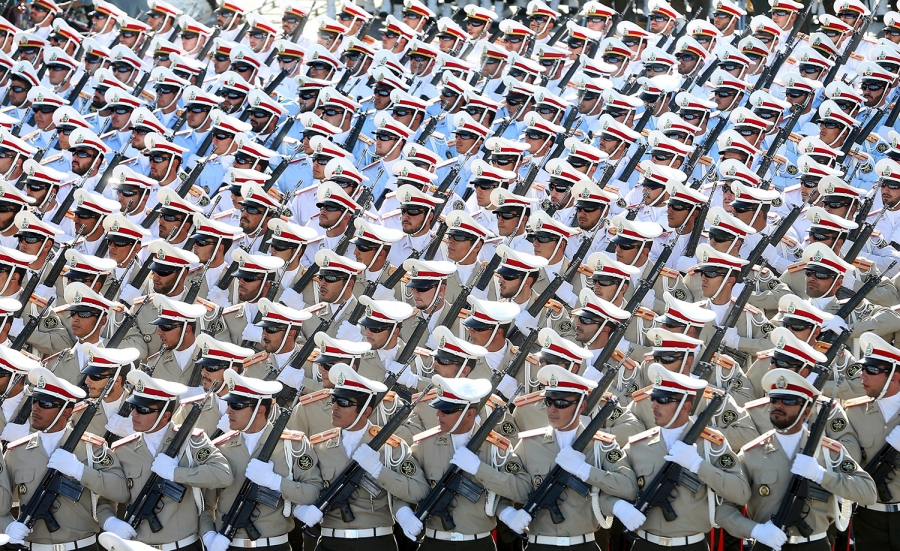Iran's Navy to Benefit From an Expiring UN Ban, U.S. Study Says

EghtesadOnline: Iran is likely to go on an international shopping spree for surface warships, submarines and anti-ship missiles after the expiration in 2020 of a United Nations resolution prohibiting it from acquiring sophisticated weapons, according to the U.S. Office of Naval Intelligence.
The expiration “will allow Iran to pursue foreign acquisitions that have been inaccessible since sanctions were imposed,” according to a new assessment of Iran’s naval forces, strategy and capability obtained by Bloomberg News. Entitled “Iran’s Naval Forces: A Tale of Two Navies,” the 44-page publication is an update to a 2009 version, Bloomberg reported.
The ban on conventional weapons will be lifted as part of the international deal reached in July 2015 between the U.S., five allies and Iran to curtail its nuclear program in return for easing international sanctions. The Navy report is likely to be cited by those who agree with President Donald Trump’s past description of the nuclear accord as “the worst deal ever negotiated.”
The Trump administration has stopped short of suggesting the U.S. will back out of the agreement. Defense Secretary James Mattis told senators in his nomination hearing that “it is an imperfect arms control agreement -- it’s not a friendship treaty” but, “when America gives her word, we have to live up to it and work with our allies.” The new report may nevertheless bolster moves in Congress to place new sanctions on Iran for its support of terrorism and its ballistic-missile tests.
For now, Iran is likely to continue to deploy indigenous weapons its engineers copied from foreign designs, including submarine-launched anti-ship cruise missiles, the “Hoot” high-speed torpedo “and potentially a supersonic” anti-ship cruise missile, “which Iran claims is in development,” according to the Navy assessment.
After the ban expires in 2020, “Iran may look to foreign acquisitions of ships and submarines with a wide array of weapons suites. Reportedly, Iran has entered into negotiations with Russia to acquire the SS-N-26 Yakhont coastal defense cruise missile, as well,” it said. Russia has sold the 300-kilometer (186-mile) missile to Syria, according to the U.S. Defense Intelligence Agency.
The report described the main components of Iran’s defense strategy as “ballistic missiles, naval forces, and proxies in the region.” It said “each of these potentially provides the means to target Iran’s regional neighbors, or military forces based or operating in the region.” It said the conventional Iranian Navy operates 14 North Korean-designed Yonoclass midget submarines produced in Iran that are each capable of carrying two heavyweight torpedoes.
‘Two Navies’
The report’s reference to “two navies” refers to the Islamic Revolutionary Guard Corps, or IRGC, which is loyal to Iran’s religious leadership and since 2007 has been responsible for speed boats in the Persian Gulf that have confronted U.S. ships in those waters and the conventional force that operates outside the Gulf.
In January, a U.S. Navy guided-missile destroyer fired warning shots at four Iranian rapid-attack craft in the Strait of Hormuz in the first such confrontation since August.
As president-elect, Trump vowed a more aggressive response to Iranian harassment of U.S. vessels. “By the way, with Iran, when they circle our beautiful destroyers with their little boats and they make gestures at our people that they shouldn’t be allowed to make, they will be shot out of the water. OK?” Trump said at a campaign rally in Florida in September. “Believe me.”
The naval intelligence assessment highlights the importance Iran places on those “little boats” as the IRGC “has continued to pursue smaller, faster platforms equipped with sophisticated weaponry, ideally suited for its asymmetric doctrine.”
From 1996 to 2006, the Corps received approximately 46 fast-attack boats from China and North Korea, equipped with torpedoes, short-range anti-ship missiles, or both, that can reach speeds of 40 to 50 knots.
While “individually, these improvements cannot compete with Western technology” taken together, “they could create an overall capability that is greater than the sum of its parts, particularly when employed in tight operational spaces like the Persian Gulf and Strait of Hormuz,” through which 20.5 million barrels of oil, or 34 percent of the world’s crude exports flow, according to a chart in the report.


